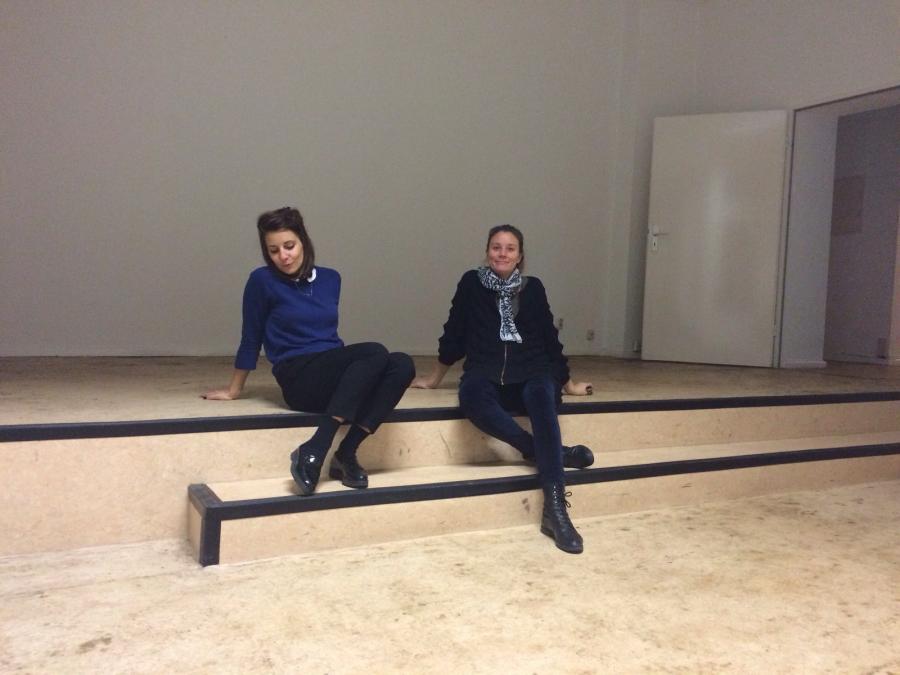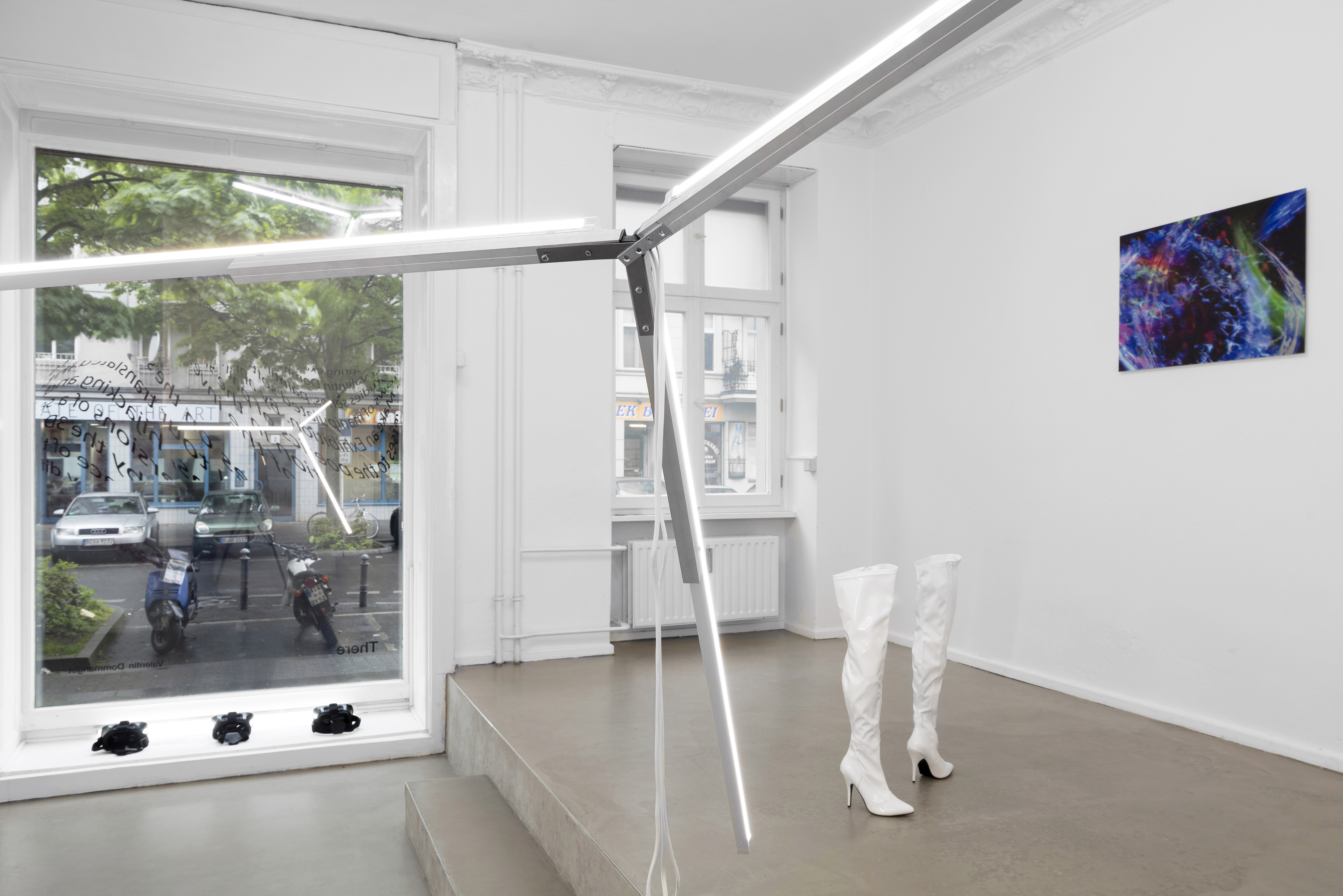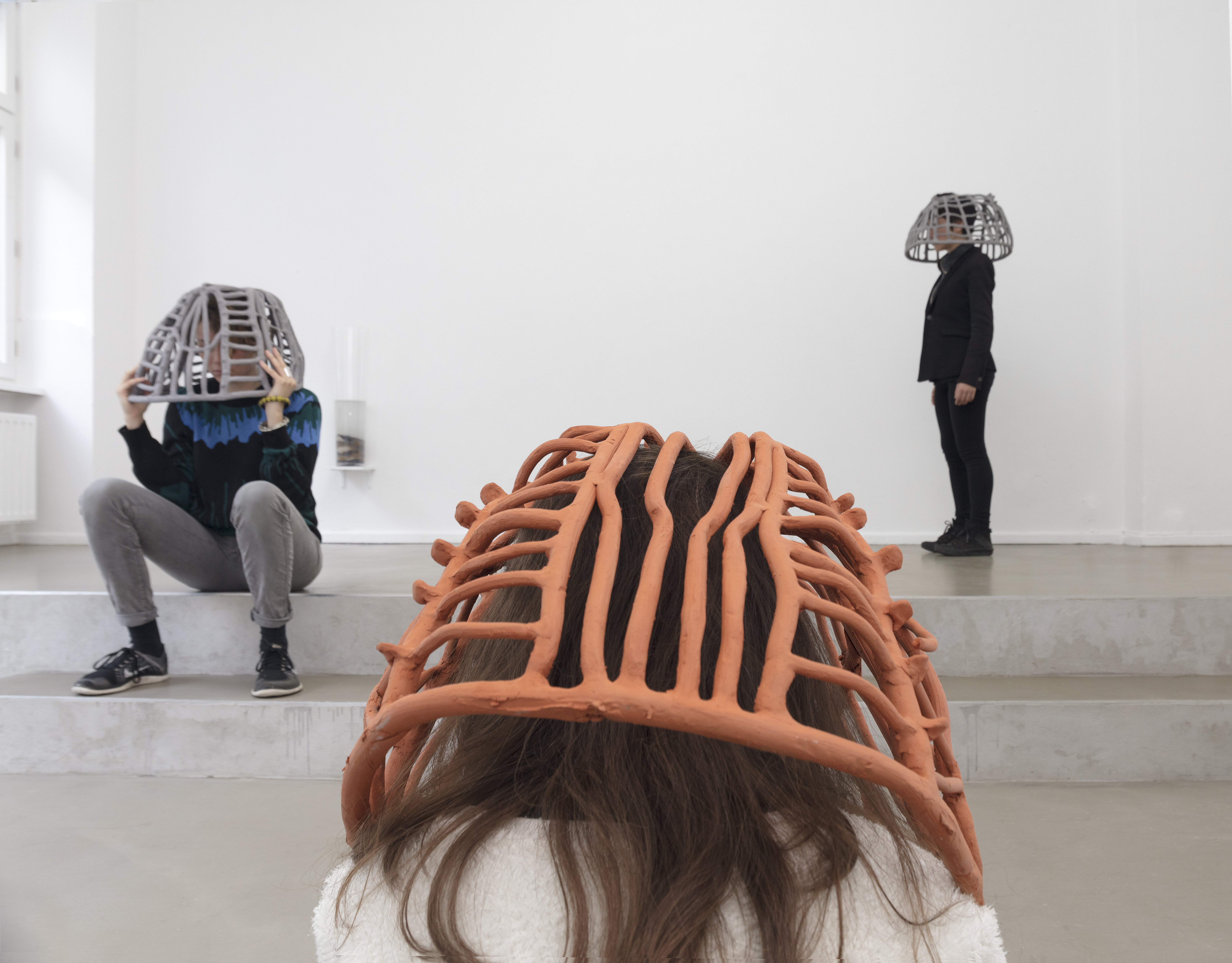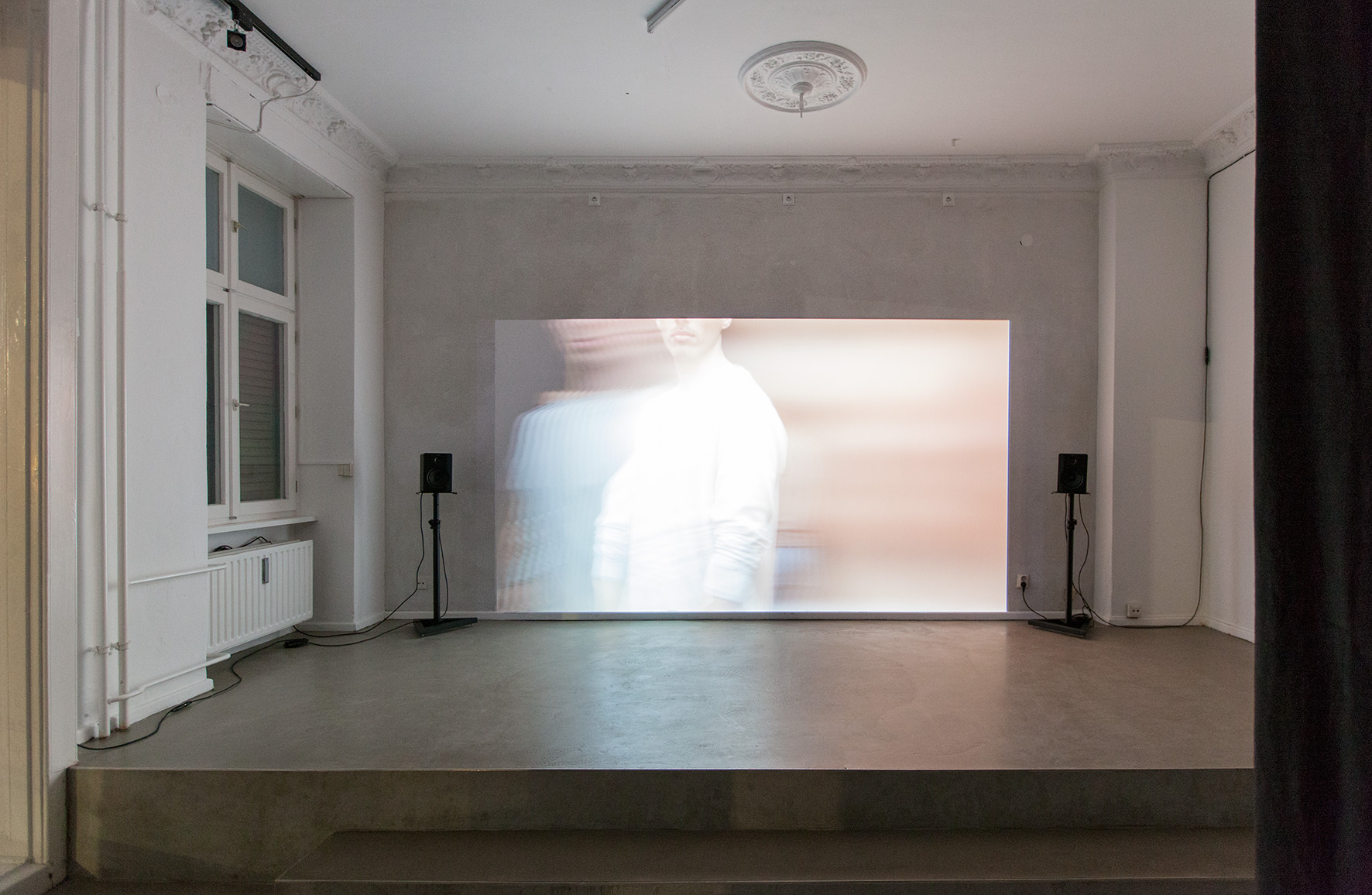Have you met... Display
Have you met... Display

Marie DuPasquier's project space Display, and related curatorial work, takes an open, flexible approach to exhibitions – allowing the process to unfold and remain susceptible to unexpected interactions and variations. She spoke to us about the importance of collaboration between people and space within her own experimental curatorial practice; of initiating a continous discussion to evolve and extend the concept of an exhibition; and of working against her own preconceived ideas through this process of exchange.
Can you start by telling us a bit about your background?
My background is in history of art and museology. I’d been working quite a long time – almost 7 years – in a science-fiction museum as an associate curator and administrator. That’s a big stone in my path. I was very involved there with science fiction, literature, as well as contemporary art exhibitions linked to the topic. The museum structure – which I really love – became a foundation of my knowledge and practice. I really enjoy reflecting on the museum structure, history, its missions and statements, and developing them – from local museums to big institutions. Of course, there’s also the curatorial aspect, and finding my own practice in there was very important as well.
The second important experience was also working for almost 7 years in a photography festival in Switzerland. In the last few years I became president of the association, so I followed the whole development of the festival and was also very involved with photography, of course. During my studies, I focused on medieval history of art and later specialized in museology with a focus on regional museums. I take these interests and experiences with me all the time: from image systems of Romanesque churches, regional museums with their collections of curiosities or specific vitrines, to exhibition devices in contemporary art. These elements provide me with an interesting and useful hybrid background and an inclination towards transdisciplinary approaches.
How did you get started with the space here in Berlin?
At the end of 2015, I had been in Berlin for 5 months and I had the opportunity to take this space with the artist Paul Polaris. I wanted to open the field up for myself, get out of the comfort zone, experiment and be closer to the subject, and to make flash exhibitions. It was also important to develop my own curatorial voice, which is sometimes not possible within the larger institutions. We had the main lines, but we didn’t have a business plan or decide the exact format beforehand. We started with a kind of necessity, because we found a very special place, with a big window case; and because the association between an artist and curator – this junction point – appealed to us. Then it developed itself along with the practice. But actually, the few lines that we designed from the beginning are still here.

There, Valentin Dommanget, Exhibition view at Display, Berlin. Photo by Chroma, 2017
How did your collaboration begin and what were the lines you defined? How does it function in the space now?
It was important to have the space in which we could develop our own individual practices and collaborate on specific projects. That’s why we decided to have a workshop and the exhibition space. We developed two lines. I was focused on the exhibitions and directed their specific attention to artistic and curatorial process – transformations – and of course, exhibition room and displays. I initiated the cycle of exhibitions called Vitrine for that reason. Paul Polaris focused on the second part, which was named Ritual. Based on regular breakfasts where discussions would take place, it was also linked to her own practice – as performative art. Many reasons led her to get involved in other projects, so, I run the art and curatorial space Display alone now. But we still share the space, as a working tool, and we still exchange a lot. For example, the last exhibition Armour with Keegan Luttrell was a project that we initiated together and she came back to be involved in the process. This project was at the intersection between our practices and interests.
Now, I still keep the ritual side alive, because beyond performances, I believe it is an inherent aspect of the exhibition – and the creative process in general – with all the norms, habits, symbols, and repetitions that go along with it. It is a kind of liturgy, from the mounting to the opening (and even before and after…); it is a passage from one state to another that we are activating and sharing.
Would you then describe the concept behind Display’s program as the curatorial approach, or curating itself?
The lines here are in the background and give a base to work with, but Display is in perpetual movement. I never wanted to have too strong a curatorial line in which I would try to fit the artistic proposals. I want to leave it open as much as possible, without disciplinary restrictions, and develop collaborations within this space – which I have to say is really special. And it became what I like to call a “contact zone” – an idea that we highlighted with the artists Marie Jeschke and Anja Langer for their work during the exhibition Enrico – autoaction in rehearsals.
So, if the starting point is always a specific connection with the artworks and the person that brings me to produce an exhibition, the collaboration within the space is one of the main aspects of Display’s curatorial approach. It is a luxury to be able to take time to develop and show specific artworks in this context, to put attention on the room’s specificities, exhibition devices or have thoughts about the visitors’ moves and perspectives. That’s why we often have in situ projects. Then, I’m careful in leaving the artistic project to the artist, but as soon as the work comes to the space, I can be very involved. I guess this is also why I like the solo or duo exhibition format, because it allows us to exchange and go deeper in thinking about all the details and also sometimes very basic and trivial aspects.
The artists that come here are at the beginning of their career or are in the phase of finishing university, and sometimes they have galleries. Then, a space that not only promotes their work but also allows them to experiment further, out of the university system or the gallery space, to focus on a specific idea or material that they want to try out, still seems to be important. So, maybe that’s what’s most interesting here with a project space, as simple as it is: there is room to continue experimenting in showing, while having another professional outlook. To put attention on this collaborative aspect is something very beautiful – in our otherwise very individual practices – and useful, as it often goes further than the space. Some of the collaborations that started in Display continue. For instance, I developed an artist-curator duo with Lucia Kempkes on her exhibition projects, and Marta Djourina is participating in the elaboration of many exhibitions in Display. When I invited the two artists Marie Jeschke and Anja Langer to show their artworks together, they actually started to fuse their practices and work on the same surfaces on this occasion – this is where we started to talk about contact zones. Now, they still work together and I like to support and follow their work. At the beginning of November, we go together to Torino in Italy, for The Others – an art fair focused on emergent art – to show their project in the section dedicated to project spaces.

Armour, Keegan Luttrell, Exhibition view at Display. Photo by Chroma, 2017
Is this collaborative aspect what you think of as experimental curatorial practice?
Yes, I think so. It’s one of the main aspects in that regard at the moment. Staying focused on what is happening when we meet in a space – share practices, with open sources and open minds – allows us to create new forms, test and see the unexpected. But it also enables us to disrupt our respective beliefs and preconceived ideas.
For next year, the curatorial research project Contemporary Bodies will be added as a foundation in my practice. I like to think about next year’s exhibitions as the empirical part of the research. But of course, the interesting part is not to have my theoretical research as dominant over the exhibitions, but on the contrary, to collaborate with the artists and see whether something could be added to the research or not. On the other side, it is interesting also if I can support the exhibitions with my observations. So, I will definitely continue the experimental part of the project space, but in another way, and also extend it to the web.
How do you connect your different projects? For example, Capsula – the curatorial platform you initiated. Is this project linked to Display, and how?
Capsula is an association for curatorial practices that we are developing together with Sara Petrucci, art historian and PhD researcher at the University of Neuchâtel in Switzerland. We have collaborated on specific exhibitions, like Touch Base at Mindscape Universe in 2016, as well as other research projects. But we want to extend Capsula to an online platform that would fit to our different locations, ways of working together and our conception of exhibitions. But yes, at the moment, I tend to relate my projects more and more to Display, and to concentrate on this base.
In general, I think that Display as a physical space is only one part of the whole project, and it means it can be more inclusive in terms of types of spaces and collaborations. Currently, whether a project space should be physical or online seems to be a general preoccupation in the field. I still like to feel the space when creating an exhibition, but at the same time, I think we should not limit ourselves to it and use the possibilities of extension. I believe an exhibition shouldn’t be considered as a finished result of a creative process, but rather a state of play, a moment that we chose to show, a cut plane in the process; in that sense, we can use the web to discuss it further. It is a chance to make an exhibition live after its opening, but even more interesting to give it another reflection context and not just accept its archive status. That means allowing subjects that are only visible online, too. Interesting crossing lines between different presentation formats should then appear. So, this is the direction I’m going in.

Gaze as Metaphor, Max Hilsammer, Lou Mouw and Lena Ditte Nissen, Exhibition view at Display, Berlin. Photo by Max Hilsammer, 2017
What’s coming up next for Display?
The end of this year will actually be quite intense. At the beginning of November, we are going to Torino in Italy, for the art fair The Others. It was important for me to connect Display to the international scene and, again, try to expand the walls of the space and go outward. The fair, dedicated to emergent art, allows a few project spaces to develop specific in situ installations. We will feature Washing Elements with Marie Jeschke and Anka Langer, in this crazy location – the former hospital Regina Maria Adelaide. The project is based on interventions on glass plates, painting-objects, and includes other companions who will carry and activate the plates as moving-objects. The next opening in Display is on the 22nd of November, with the exhibition Ab und zu durch Tauben from the collective FROON TIMMER (Alison Darby, Marta Djourina, Karin Salathé, Sidsel Ladegaard). This project will focus on recurrent human activities, how they concretize in space, with a reflection on the exhibition process. The state of rest and the night will be explored. Going back to my interests of showing a transformation, activating images or objects and liturgy, this project is very close to my departure points. The last exhibition of the year, opening on the 8th of December, will be a duo exhibition with the two artists Shira Wachsmann and Katharina Ludwig. And of course, these next months I will be busy taking care of the next steps: the online platform and the research Contemporary Bodies, in which I will be developing this idea of contact zone, within the artworks, the creative process and the exhibition (in the space and including different actors and viewers). This is a big part of Display’s future.
***
Washing Elements with Marie Jeschke and Anja Langer The Others Art Fair Torino 2-5 November 2017Ab und zu durch Tauben with FROON TIMMER: Alison Darby, Marta Djourina, Karin Salathé, Sidsel Ladegaard Display, Berlin 22-29 November 2017
Duo exhibition with Shira Wachsmann & Katharina Ludwig Display, Berlin 8-15 December 2017